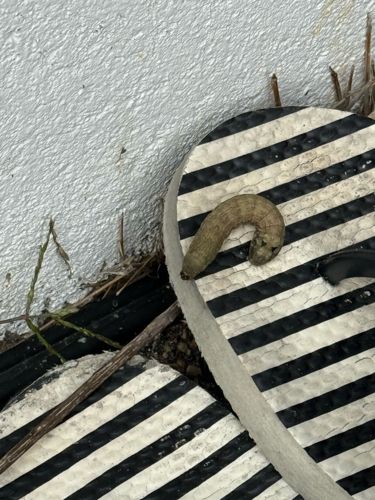Cutworm (larva)
Scientific Name: Various species in the family Noctuidae (e.g., Agrotis ipsilon, Peridroma saucia)
Order & Family: Lepidoptera (moths and butterflies), Noctuidae (owlet moths)
Size: Larvae typically range from 2.5 to 5 cm (1 to 2 inches) in length.

Natural Habitat
Found in agricultural fields, gardens, lawns, and areas with rich soil and vegetation. They hide during the day just below the soil surface or under debris.
Diet & Feeding
Cutworms are polyphagous, meaning they feed on a wide variety of plants. They primarily feed on the stems and leaves of young seedlings and plants, often cutting them off at or just below the soil surface. They are known to be destructive to crops like corn, tomatoes, cabbage, and many garden vegetables.
Behavior Patterns
Cutworms are nocturnally active, feeding primarily at night. During the day, they curl into a C-shape and hide in the soil or under protection. They undergo complete metamorphosis, with the larval (cutworm) stage being the damaging phase. They overwinter as larvae or pupae in the soil.
Risks & Benefits
Risks: Cutworms are significant agricultural and garden pests, causing substantial damage to young plants and crops, leading to economic losses. Benefits: As part of the food chain, they can be a food source for birds, beneficial insects, and other predators. The adult moths are also pollinators for some plants, though their larval stage is considered a pest.
Identified on: 9/21/2025